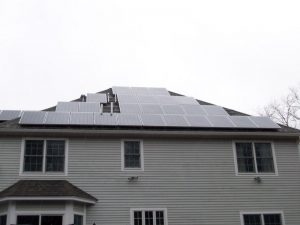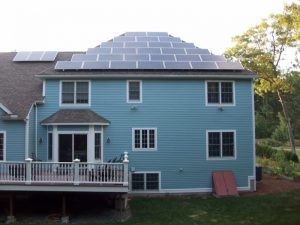(First in a series about shady solar workmanship, how to tell the difference between a good and bad solar installation, and how to protect yourself from unethical or incompetent installers. Thanks to Jonathan Williams, my partner and VP of Installation & Service, for contributing stories “from the trenches” for this series. )
Solar electric (photovoltaic) systems are pretty simple — they have no moving parts except in the inverter, and require virtually no maintenance. They are not, however, necessarily simple to install. There are many ways to mess them up.
Shoddy workmanship is a real threat to the industry’s reputation. Shoddy work generally arises from one of two scenarios: (1) A shady installer out for a quick buck. If your installation team is measured by its speed, corners will be cut. (2) Simple incompetence. With everyone from roofers and home heating companies to Wall Street-funded financial organizations claiming to be solar specialists, quality is bound to suffer.
So what are we talking about when we say shoddy workmanship? Most people can spot some shoddy work like crooked panels, but other aspects of your solar installation are harder to see.
Take this home in Bedford. The original solar system was installed by a company that sub-contracts out all its work. Let’s called them Bad Work Inc. When the homeowner’s inverter failed after a year of operation, Bad Work Inc. refused to come out to fix it, because they didn’t know how or didn’t care. They’d made their money.
The homeowner asked New England Clean Energy to help. When we inspected the system, we were shocked (figuratively not literally, thankfully). Not only was the installation unattractive, it was unsafe. The spaces between the points where the panels attached to the roof were four times farther apart than what the manufacturer required, putting an unsafe amount of weight on the roof at the attachment points. Holes in the roof where the panels attached were poorly sealed, practically inviting the rain into this woman’s house. The clamps securing the panels were not tightened all the way, the clips mounting the panels to the racking were bent to fit thus reducing their integrity, wires were run next to sharp metal edges, and electrical connections were just wrong. Sadly, the list goes on.
We had no choice but to pull down the entire system and start over. But this story has a happy ending. Here’s how the home looks now, with a professionally installed solar electric system, a new paint job, and a much wiser owner.
Next week: Why Wires Matter
If you liked this article, you might also enjoy:







No comments yet. You should be kind and add one!
The comments are closed.